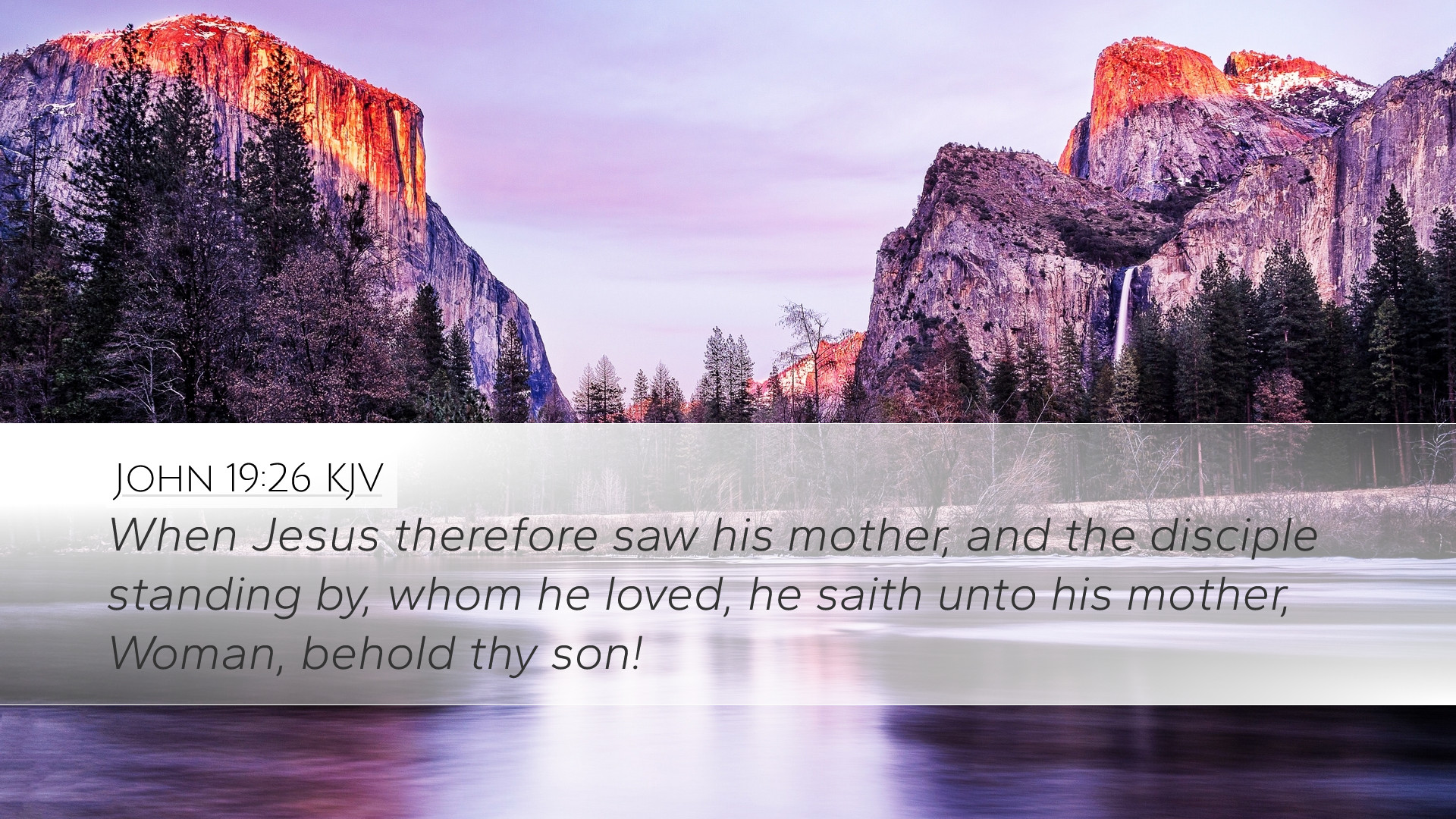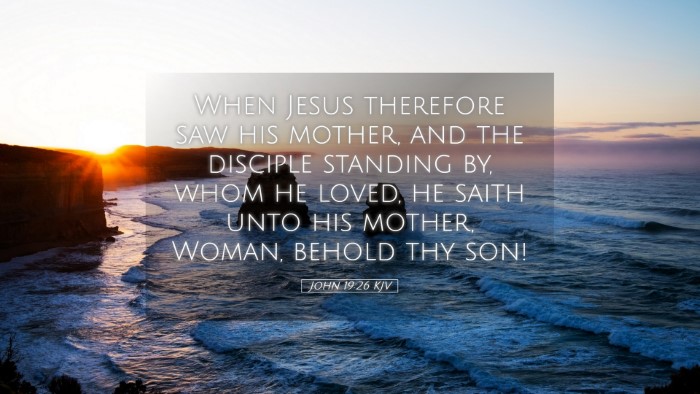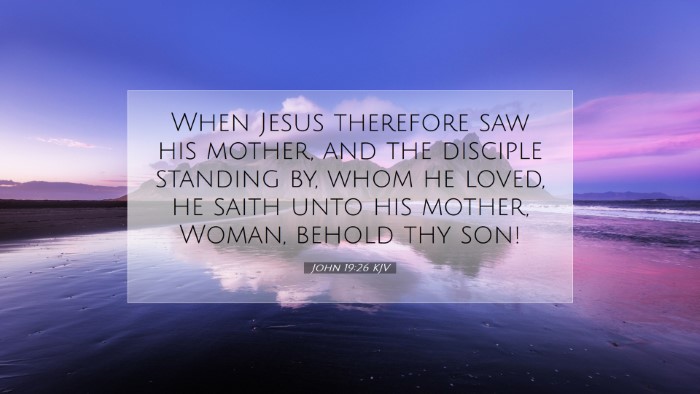Commentary on John 19:26
Verse: "When Jesus therefore saw his mother, and the disciple standing by, whom he loved, he saith unto his mother, Woman, behold thy son!."
This poignant moment, occurring during the crucifixion, highlights deep emotional and theological significance. Several public domain commentaries shed light on the layers of meaning embedded within this verse.
The Context of the Crucifixion
The crucifixion is a central event in the Christian faith, symbolizing the sacrifice of Jesus for humanity's sins. Commentary from Matthew Henry reminds us that Jesus’ attention to his mother amidst his suffering exemplifies his compassion and care. This moment reveals the personal nature of Christ’s mission, not only to save but to fulfill familial duties.
The Characters of the Scene
In John 19:26, Jesus addresses two key figures: His mother Mary and the disciple whom He loved, traditionally understood to be John. Albert Barnes emphasizes the intimate relationship between Jesus and these individuals, marking Mary as a symbol of humanity’s struggles and John representing the faithful disciple. Together, they reflect the broader community of believers.
Mary: The Mother in Sorrow
Mary's presence at the crucifixion underscores her role as a suffering mother. Adam Clarke notes that Jesus’ concern for Mary is exemplary of divine love showing itself in the midst of human pain. Despite her sorrows, she is entrusted with the care of the beloved disciple, symbolizing the continuity of faith even in suffering.
John: The Beloved Disciple
John’s identification as the beloved disciple signifies the nature of true discipleship, characterized by loyalty and love. Matthew Henry reflects that John stands as a representative of all believers, bearing witness to Christ's love and teachings as he is entrusted with Mary’s care. This act foreshadows the community of believers’ responsibility toward one another.
Theological Insights
The address “Woman” has provoked numerous interpretations. While it appears distant, it is, in fact, culturally respectful and acknowledges Mary’s role without diminishing her humanity. Albert Barnes mentions that this term distinguishes Jesus’s relationship with Mary, reaffirming his divine mission over familial obligations. Thus, Jesus maintains the purpose of His work while honoring his earthly ties.
Jesus’ Compassion
This act of entrusting Mary to John illustrates profound compassion. Adam Clarke states that Jesus, facing immense suffering, still prioritizes the needs of his mother. This very act walks alongside the commandments of love, where Jesus embodies the spirit of caring for the vulnerable.
Lessons for Believers
From this moment of selflessness, several lessons emerge for pastors, theologians, and students of the Bible:
- The Importance of Care: The fidelity of Christian duty extends to caring for one another, as seen in Jesus’ arrangement for Mary's future. Believers must embody this love and care within their communities.
- Faith Under Trial: Mary’s unwavering presence during her son’s suffering offers a template for enduring faith amid trials. Her example encourages a steadfast spirit despite inevitable grief.
- Compassionate Leadership: Jesus’ behavior models how leaders—spiritual or otherwise—should treat those they lead. The balance of authority and compassion is vital in the Christian community.
Application to Ministry
This scripture invites reflection on pastoral care within the church. The responsibility placed on John to care for Mary suggests that leaders should be vigilant in supporting the elderly, vulnerable, and those who are grieving in their communities. Thus, pastors can cultivate an environment where love, empathy, and support flourish.
Conclusion
John 19:26 serves as a rich resource for understanding not only the depth of Jesus' compassion in His final hours but also the responsibilities that come with love and care within the Christian body. It offers a model for believers in their relationships with one another, highlighting that even in the face of suffering, love must be the guiding principle of action.


